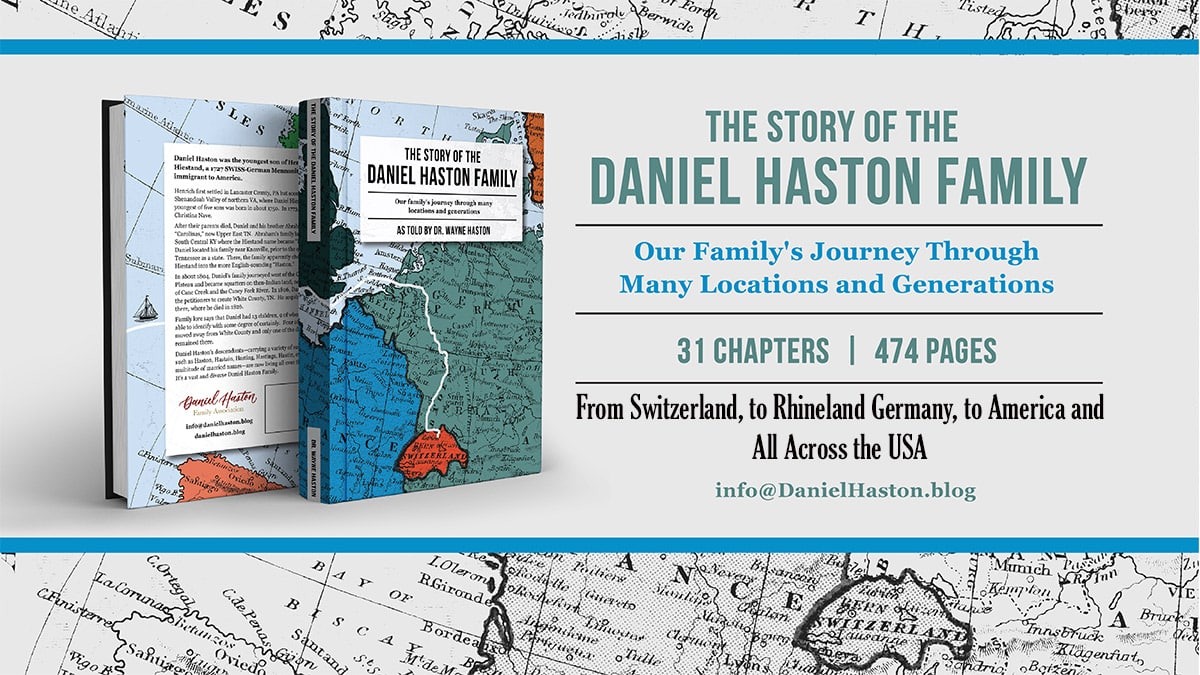The Story of the Daniel Haston Family Visualized

Telling Our Haston Family Story - From Bottom to Top
Our Daniel Haston family story is rather simple.
It can be told in four steps, and clarified with a bit of explanation at each step.
First – Our European roots are in Switzerland. Our original family name was Hiestand. The first known appearance of the name occurred in 1401 in Zürich, Switzerland. In the 1600s, some of our ancestors became Anabaptists (Mennonites) because they believed that people should be old enough to (1) understand the gospel of Jesus Christ and (2) personally receive Him as their Savior before being (3) baptized. Because of their basic evangelical faith these ancestors were severely persecuted and forced to flee Switzerland.
Second – Our Anabaptist (Mennonite) ancestors were invited to settle in and near the village of Ibersheim on the Rhineland of Southwest Germany. In 1704, Henrich Hiestand was born there to one of the Swiss refugee farming families. In 1727, as a young adult, Henrich left Germany and journeyed to Pennsylvania in order to secure land to farm and raise a family. He soon had 226 acres surveyed in what became Lancaster County, got married there, and began to raise a family. But after a few years in Lancaster County, Henrich (our immigrant ancestor) moved to the Shenandoah Valley of Virginia and purchased 205 acres on the South Fork of the Shenandoah River.
Third – On the beautiful riverfront property in Virginia, his youngest son Daniel was born in about 1750. A Shenandoah County, Virginia marriage record informs us that Daniel married Christina Nave on September 28, 1773.
Fourth – In about 1783, Daniel moved his young family to what is now East Tennessee. While the U.S. Government was negotiating with the Cherokee native Americans for the ownership of land west of the Cumberland Mountain range, Daniel moved to what is now Middle Tennessee and settled as a “squatter” in about 1804 in what became White County a couple of years later.
From there, some of his children and grandchildren spread westward to Missouri, Arkansas, Oklahoma, Texas, and even farther west. As they moved, some branches of the family adopted changes of the surname, to such iterations as Hastings, Hasting, Hastin, and Hastain. Apparently, they became convinced that their European ancestors were English, thus the changes to names more acceptable to English clerks and their English neighbors.
If you appreciated this article, please share it with others who might also enjoy it.

